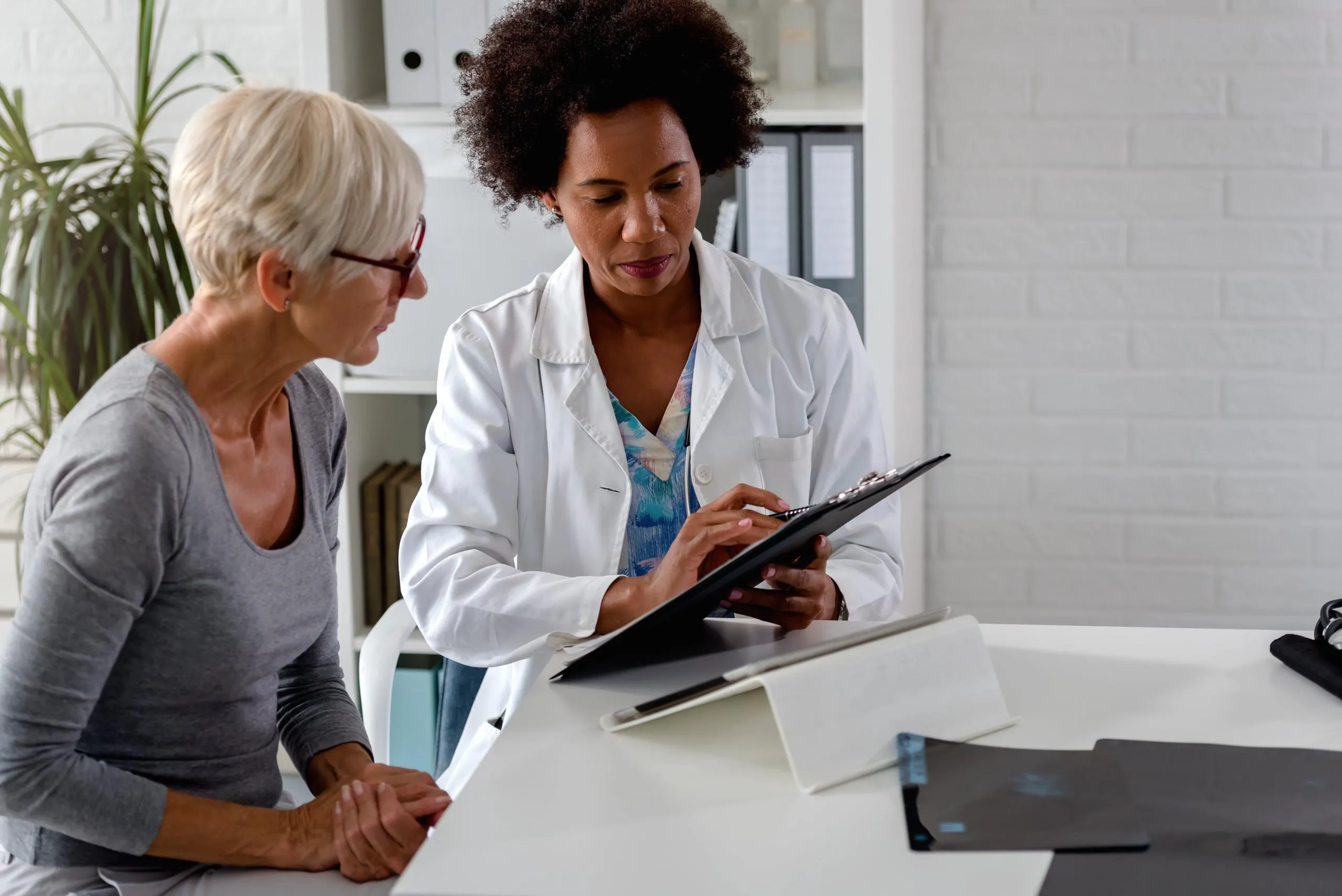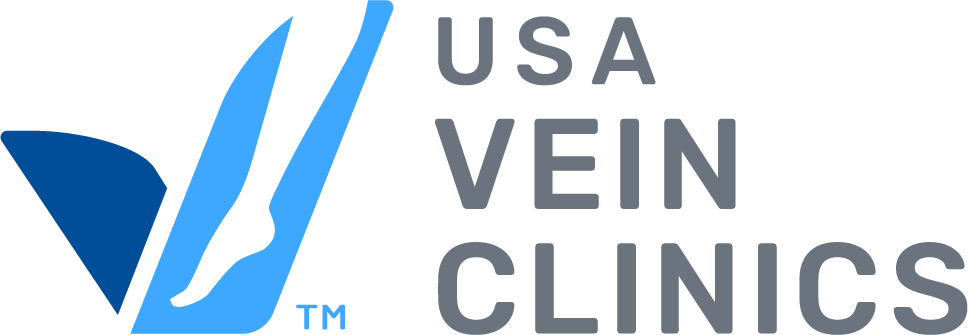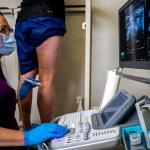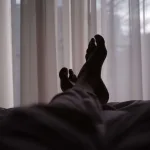
Varicose veins are something that millions of Americans suffer from. In fact, 1 of every 5 adults in the U.S. struggles with varicose veins, making this a major issue that is either happening to you or someone you know. But varicose veins are not the only vein problem striking men and women across the country today. There are a number of different venous diseases people may find themselves suffering from.
Which leads us to the first question you likely have. . .
What are venous disorders?
This type of disorder that attacks your veins is caused by veins in your feet and legs being unable to function as they are normally supposed to. “But what exactly is their normal function?” you ask.
To put it simply, your veins work to pump blood toward your heart. However, over time, your veins’ valve walls can weaken (especially since they are working to pump your blood up your body, a.k.a. against gravity), which causes the blood to flow backward and end up pooling in your legs and feet.
You will typically see the first signs of something like this as varicose veins. However, if you don’t attack your vein problems when they first surface and rather let your vein disease go untreated for too long, you are potentially putting your life at risk of developing deep vein thrombosis.
The most common venous disorders
Varicose Veins
Varicose veins are enlarged veins that often appear ropey and look blue or red. They also occur deeper under your skin where you are not able to see them. People who suffer from this condition often have a family history of varicose veins. They frequently affect pregnant women and those with occupations that require long periods of standing such as nurses and teachers. Aside from their unpleasant appearance, side effects of varicose veins include pain, fatigue, itching, burning, swelling, cramping, restlessness and throbbing.
Spider Veins
Spider veins are tiny, thin veins that can be seen very close to the skin’s surface. They look like red, blue or green spider webs just beneath the skin. Sometimes they are described as looking like marble. Spider veins are caused by a lack of blood. These become nonfunctional, “dead-end veins.”
Spider veins are very small varicose veins. Although they don’t usually cause discomfort, the deeper veins that often accompany them can. Many vein disease sufferers have a combination of both varicose and spider veins. While they may seek treatment for cosmetic improvement, many of our patients are also looking for relief from pain.
Hand Veins
In most cases where hand veins are visible, they are normal and healthy. They are not diseased although they can be unattractive. Many patients choose to have them treated for cosmetic reasons. It is not uncommon to develop large bulging veins on the back of hands. Generally, this happens when the skin relaxes and thins with age, causing the veins to become more noticeable and appear enlarged.
Facial Veins
Facial veins range in size from very fine red or purple veins to larger blue-green veins. The smaller veins are typically seen on the cheeks, nose, and chin. They are commonly due to rosacea and damage from sunlight. The larger veins are more commonly seen on the temples and at the edge of the jaw. They can also make circles under the eyes appear dark. Typically, none of these veins cause pain and are usually treated for cosmetic reasons.
Deep Vein Thrombosis
Deep vein thrombosis (or DVT) is the formation of a blood clot (thrombus) within a deep vein. It mainly affects large veins that are deep inside the lower leg and thigh. DVT can be life-threatening if the clot breaks off, travels, and lodges in the lung. Veins that appear as enlarged and visible near the surface of the skin may signal this potentially serious health issue.
Many people with varicose veins experience pain, swelling, heaviness, and fatigue in their legs. In some cases, the leg veins may become inflamed and painful – a condition known as superficial phlebitis. Sometimes phlebitis can be associated with superficial vein thrombosis (SVT). A recent study published in the Archives of Dermatology indicated that one in four patients with SVT also had deep vein thrombosis.
What causes venous disorders?
There are a number of different factors that can cause someone to develop vein problems such as those above, but these are the most common ones that vein specialists see.
Sitting too often
When you sit for a great deal of time, you are putting more pressure on your legs, as well as keeping your veins working hard against gravity to get your blood back up to your heart. This combo can not only make your vein-related disorders worse but can also be the reason that they show up in the first place.
While we understand that many jobs require sitting for most of the day, make it a habit to stand up every 30 minutes and walk around to get your blood flowing again. Even elevating your legs on your desk for a few moments will be a great help to your veins.
Aging
While we know that varicose veins and other venous diseases do not only occur in older people, age is one of the factors that contribute to the development of varicose veins. To give you some numbers, varicose veins pop up in 1 of every 2 people over the age of 50.
Family history
There’s no battling your genes when it comes to venous disorders. This unfortunate fact means that your genes play a large role in determining whether you’re destined for vein problems or not. If someone in your family has a history of venous disorders, your chances of suffering the same are greatly increased.
While you certainly can’t change your genes, your age, or maybe even your job that requires you to be sedentary most of the day, you can make small changes in your life that will help lower your risk of developing venous disorders.
Here are some of the best things you can do to help combat the onset of vein disease:
- Get up and walk every 30 minutes, even if it’s just around your house
- Schedule two 20-30 minute walks into your day — in the morning, and in the evening
- Ensure your diet is healthy and balanced
- Stretch your legs throughout the day
- Avoid wearing clothing that is too tight and cuts off blood circulation
- Drink more water
- Elevate your legs whenever possible
Doctors and medical researchers have been able to develop effective procedures to help with vein issues that are non-invasive and require little-to-no downtime.
What treatment you’ll need for your vein issues is dependent upon the problem, and the severity of your vein struggles. However, these are the treatments that are offered at Vein Clinics of America, the most trusted national vein clinic in the United States.
Access to expert care is convenient with USA Vein Clinics’ nationwide network of clinics. We accept most insurance plans, including Medicare and Medicaid. You can schedule your appointment online to verify your insurance coverage instantly or call 888.768.3467.





